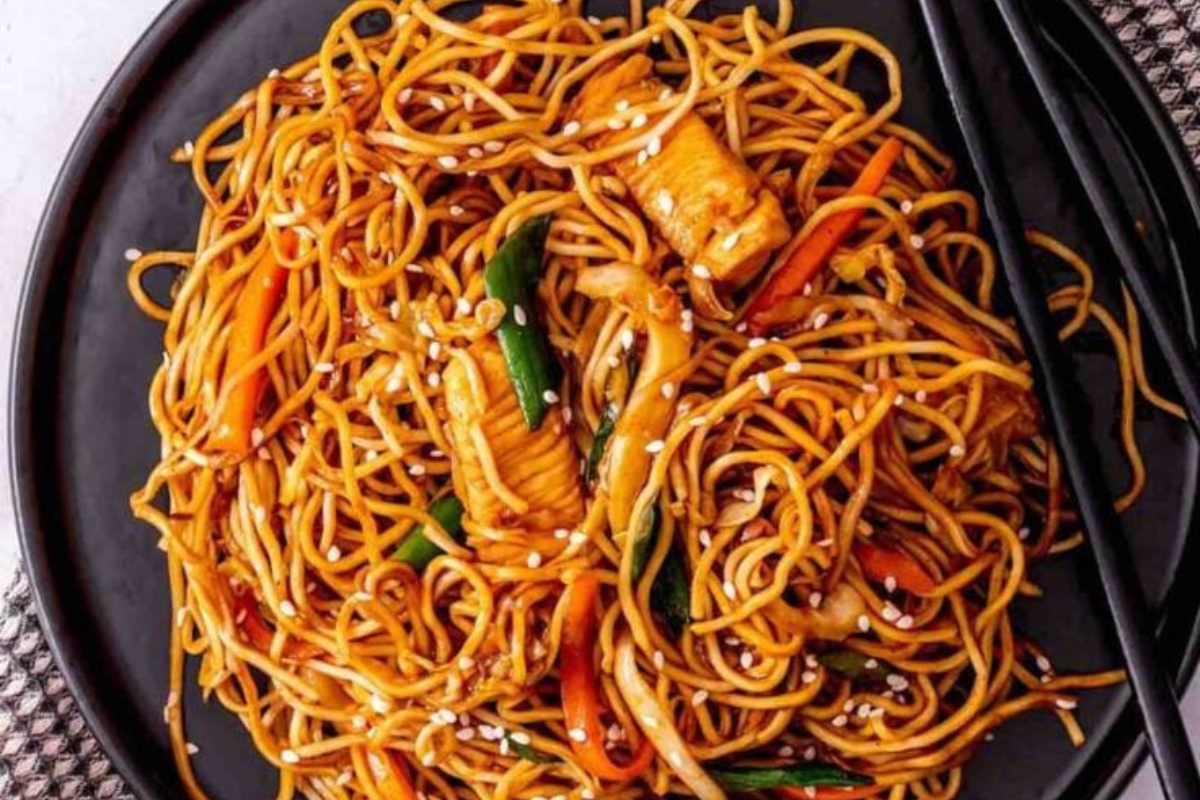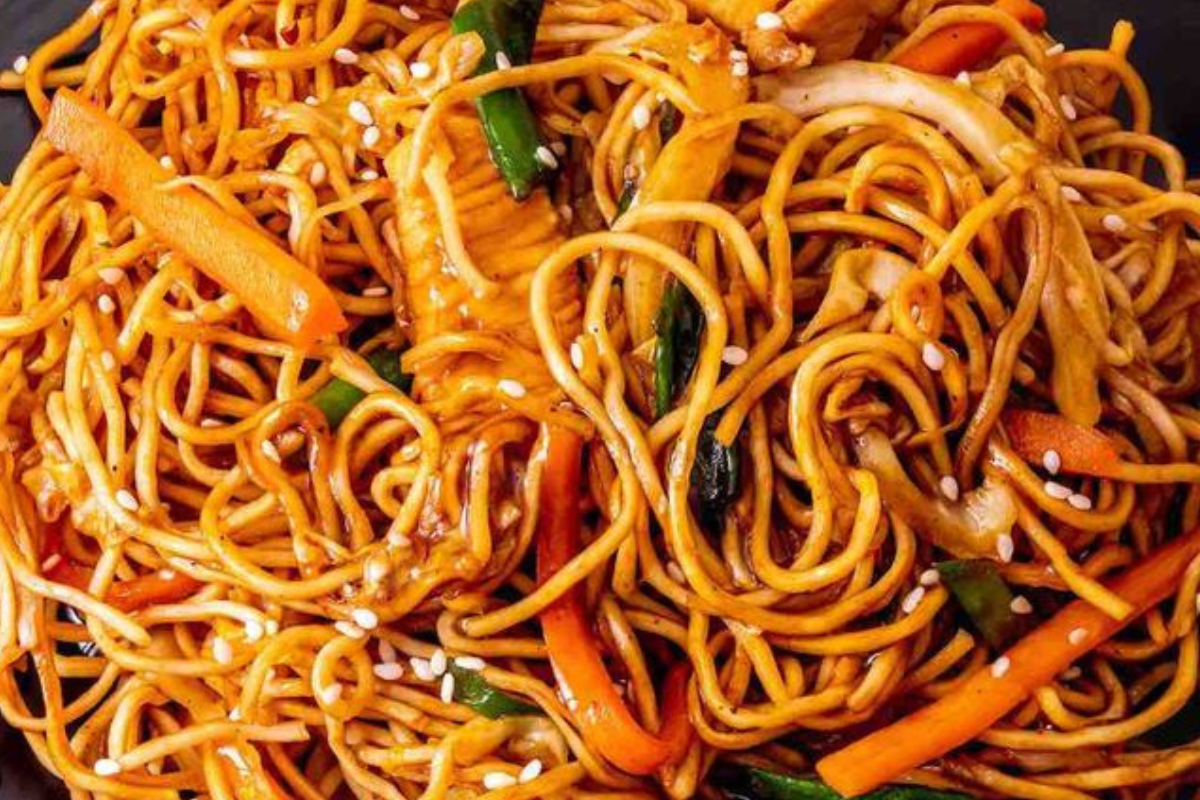Introduction to French Onion Pasta
Overview of French Onion Pasta
French Onion Pasta, a delightful twist on the classic French onion soup, is a testament to culinary creativity. This dish combines the deep, caramelized flavors of onions with the comforting texture of pasta, all smothered in a rich cheese blend. Originating from the desire to fuse two beloved comfort foods, French Onion Pasta has emerged as a favorite for its unique flavor profile and satisfying heartiness.
The essence of this dish lies in its caramelized onions, which provide a sweet and savory base, complemented by the al dente texture of the pasta. The choice of cheese, typically a blend of Gruyère and Parmesan, adds a creamy, indulgent layer that ties the dish together. French Onion Pasta is not just a meal; it’s a culinary experience that brings together the best of both worlds.
The Key Ingredients
Essential Ingredients for French Onion Pasta
The magic of French Onion Pasta lies in its carefully selected ingredients, each contributing to the dish’s rich flavor and comforting texture. Here’s a breakdown of the essential components:
- Onions: The star of the dish, onions are caramelized to bring out their natural sweetness. Yellow onions are preferred for their perfect balance of sweet and savory notes.
- Pasta: The choice of pasta can vary, but traditionally, long strands like spaghetti or linguine are used to hold onto the sauce and caramelized onions effectively. For a more authentic experience, consider using bucatini, which has a hollow center to capture more sauce.
- Cheese: A blend of cheeses is ideal for achieving the creamy, gooey texture reminiscent of French onion soup. Gruyère cheese, known for its nutty flavor and excellent melting qualities, is a classic choice. Parmesan adds a salty, umami kick. Together, they create a rich and indulgent topping.
- Broth: A good quality beef or vegetable broth forms the base of the sauce, infusing the pasta with depth and richness.
- Herbs and Seasonings: Fresh thyme and bay leaves are commonly used to add herbal notes. Salt and pepper are essential for seasoning, while a hint of garlic can enhance the overall flavor profile.
- Butter and Olive Oil: A combination of butter and olive oil is used for caramelizing the onions, adding richness and flavor.
- Flour: A small amount of flour may be used to thicken the sauce, ensuring it clings to the pasta effectively.
Step-by-Step Cooking Process
Preparing the Onions
Caramelizing onions is an art that requires patience and attention to detail. Here’s how to achieve perfectly caramelized onions for your French Onion Pasta:
- Slice the Onions: Begin by thinly slicing the onions. Uniform slices ensure even caramelization.
- Heat the Pan: In a large pan, heat a mixture of butter and olive oil over medium heat. The oil prevents the butter from burning, while the butter adds richness to the onions.
- Add the Onions: Once the butter and oil are hot, add the onions and a pinch of salt. The salt helps draw out moisture, aiding in the caramelization process.
- Cook Slowly: Reduce the heat to low and let the onions cook slowly. Stir occasionally to prevent them from sticking to the pan. This process can take 30-40 minutes. The onions are done when they turn a deep golden brown and have a jam-like consistency.
- Deglaze the Pan: If the onions start to stick, you can deglaze the pan with a small amount of broth. This step also adds flavor to the onions.
Cooking the Pasta
Choosing and cooking the pasta correctly is crucial for the perfect French Onion Pasta:
- Choose the Right Pasta: Opt for pasta like bucatini, linguine, or spaghetti. These shapes work well with the caramelized onion and cheese sauce.
- Boiling the Pasta: Bring a large pot of salted water to a boil. Add the pasta and cook until it’s al dente, following the package instructions.
- Reserve Pasta Water: Before draining the pasta, reserve a cup of the pasta water. This starchy water is key to creating a silky sauce that clings to the pasta.
- Drain and Set Aside: Drain the pasta and set it aside. It’s best to time this so that the pasta is ready when the onions are caramelized.

Assembling the Dish
Combining Ingredients
Once you have your caramelized onions and cooked pasta, it’s time to bring everything together:
- Mixing Onions and Pasta: In the pan with the caramelized onions, add the cooked pasta. Gently toss to ensure the pasta is evenly coated with the onions. This is where the dish starts to come together, with the pasta absorbing the rich, sweet flavors of the onions.
- Adding Broth: Pour in the beef or vegetable broth over the pasta and onions. The broth not only adds moisture but also brings a depth of flavor, creating a sauce-like consistency. Allow the mixture to simmer for a few minutes so the pasta can soak up the flavors.
- Cheese Incorporation: Gradually add the grated Gruyère and Parmesan cheese to the pan, stirring continuously. The cheese should melt into the mixture, creating a creamy, cohesive sauce. Be mindful of the heat at this stage; too high, and the cheese may clump instead of melting smoothly.
- Adjusting Consistency: If the sauce seems too thick, gradually add the reserved pasta water until you reach the desired consistency. The starch in the water helps to create a silky, smooth sauce that beautifully coats the pasta.
- Seasoning: Finally, season the dish with salt, pepper, and any additional herbs to taste. The seasoning should complement the sweet caramelized onions and the savory cheese.
Cheese and Toppings
The choice of cheese and toppings can significantly influence the final taste of your French Onion Pasta:
- Choosing the Right Cheese: Gruyère is a classic choice for its nutty flavor and excellent melting qualities. Parmesan adds a salty, umami element. Together, they create a rich and indulgent topping that is characteristic of French onion soup.
- Adding Toppings: For added texture and flavor, consider toppings like crispy fried onions, fresh herbs like thyme or parsley, or even a sprinkle of additional cheese. These toppings add a layer of complexity and elevate the dish.
Exploring the Origins and Cultural Significance of French Onion Soup
The History and Evolution of French Onion Soup
In this section, delve into the rich history and cultural significance of French Onion Soup, the inspiration behind French Onion Pasta. Explore its origins, how it evolved over time, and its status in French cuisine. Discuss how this humble soup, traditionally made with caramelized onions and beef broth, became a staple in French bistros and gained popularity worldwide.
Origins and Early History: Trace the roots of French Onion Soup back to ancient times and how it evolved in French cuisine. Discuss its humble beginnings and how it was historically seen as a peasant dish due to its simple ingredients.
French Onion Soup in French Cuisine: Highlight the soup’s role in classic French cuisine, including its standardization in French cooking and its presence in Parisian bistros.
Global Popularity: Discuss how French Onion Soup gained international recognition and became a beloved dish in various cultures, leading to creative adaptations like French Onion Pasta.
Cultural Significance: Reflect on what French Onion Soup represents in terms of French culinary identity and its influence on global culinary practices.
Creative Serving and Presentation Ideas
Elevating French Onion Pasta with Stylish Plating
This section can focus on creative ways to serve and present French Onion Pasta, transforming it from a simple home-cooked meal to a dish worthy of a fine dining experience. Discuss various plating techniques and presentation tips that can enhance the visual appeal and make the dish even more enticing.
Plating Techniques: Explore different ways to plate French Onion Pasta to make it visually appealing. Discuss the use of color contrasts, the arrangement of pasta on the plate, and how to use garnishes effectively.
Garnishing for Flair: Suggest garnishes that not only add flavor but also enhance the visual appeal of the dish. Ideas can include fresh herbs like thyme or parsley, edible flowers, or a sprinkle of extra cheese.
Serving in Unique Dishware: Discuss the impact of serving the pasta in unique or elegant dishware. Whether it’s a rustic bowl for a homely feel or a sleek, modern plate for a more sophisticated look, the choice of dishware can significantly affect the presentation.
Table Setting for Special Occasions: Provide tips on setting the table when serving French Onion Pasta for special occasions. Include suggestions for table decor, napkin folding, and choosing the right cutlery and glassware.
Pairing French Onion Pasta with Beverages
Selecting the Perfect Drinks to Complement the Dish
In this section, delve into the art of pairing beverages with French Onion Pasta. Discuss how the right drink can enhance the flavors of the dish and provide a more rounded dining experience. Offer suggestions for various types of beverages that complement the rich and savory profile of French Onion Pasta.
Wine Pairings: Explore suitable wine options that pair well with the savory and cheesy nature of the dish. Suggest light to medium-bodied red wines or crisp white wines that can balance the richness of the pasta.
Non-Alcoholic Beverages: For those who prefer non-alcoholic options, suggest drinks like sparkling water with a twist of lemon or lime, herbal teas, or artisanal sodas. These beverages can refresh the palate and complement the dish’s flavors.
Beer and Cider Pairings: Discuss how certain beers or ciders can be a great match for French Onion Pasta. Recommend beers with a balanced malt profile or ciders with a slight acidity to cut through the richness of the cheese.
Coffee and Tea Pairings: For a unique experience, suggest pairing the pasta with a robust coffee or a strong black tea. These can offer a contrasting flavor profile that highlights the dish’s savory elements.

FAQs
Frequently Asked Questions
Q: Can I use a different type of onion for this recipe?
A: While yellow onions are preferred for their balance of sweetness and savoriness, you can use other types of onions. Red onions will give a slightly different flavor profile, and sweet onions can make the dish sweeter.
Q: How can I prevent my cheese from clumping in the sauce?
A: To prevent clumping, ensure the cheese is grated finely and added gradually while stirring continuously. Also, remove the pan from direct heat when adding cheese to avoid overheating, which can cause clumping.
Q: Is there a way to speed up the caramelization of onions?
A: Caramelizing onions is a slow process that can’t be rushed without compromising flavor. However, cooking them on a consistent low heat and stirring occasionally can ensure they caramelize evenly without burning.
Q: Can I make French Onion Pasta ahead of time?
A: Yes, you can prepare the caramelized onions in advance and store them in the refrigerator. When ready to serve, reheat the onions, cook the pasta, and assemble the dish as instructed.
Q: What are some tips for achieving perfectly cooked pasta?
A: To ensure perfectly cooked pasta, use a large pot of boiling salted water and stir the pasta occasionally to prevent sticking. Cook the pasta until it’s al dente, then drain it, reserving some pasta water for the sauce.
